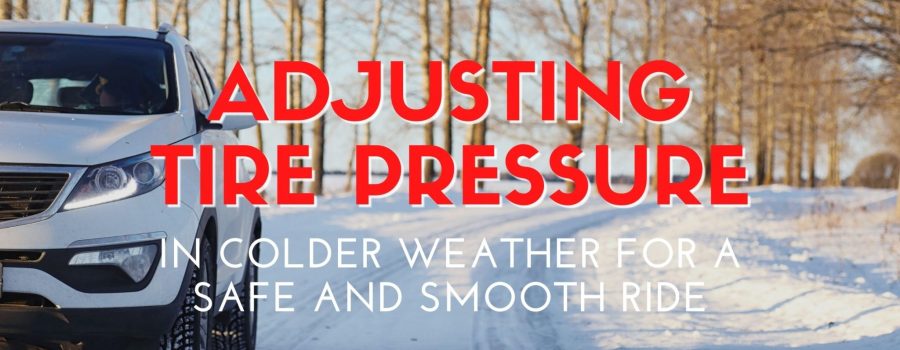Adjusting Tire Pressure in Colder Weather for a Safe and Smooth Ride
As the temperature drops and winter approaches, many aspects of our daily routines change. One crucial but often overlooked aspect is tire maintenance. The colder weather can have a significant impact on tire pressure, which, if not properly addressed, can affect your vehicle’s handling, safety, and fuel efficiency. In this article, we will explore the importance of adjusting tire pressure in colder weather and provide you with essential tips to keep your tires in optimal condition throughout the winter months.
Understanding Tire Pressure Fluctuations
Tire pressure is measured in pounds per square inch (PSI) and is a critical factor in your vehicle’s performance. In colder weather, the air inside your tires contracts, leading to a decrease in tire pressure. This phenomenon occurs because cold air is denser than warm air. For every 10-degree Fahrenheit drop in temperature, your tire’s pressure can decrease by about 1 PSI. This may not seem like much, but it can accumulate and have a significant impact on your vehicle’s performance and safety.
Effects of Incorrect Tire Pressure
- Reduced Traction: Under-inflated tires have less contact with the road, reducing traction and increasing the risk of skidding, especially in icy or snowy conditions.
- Poor Handling: Incorrect tire pressure can lead to poor handling, affecting your ability to control the vehicle, steer accurately, and respond to sudden changes in road conditions.
- Reduced Fuel Efficiency: Under-inflated tires create more rolling resistance, which means your vehicle has to work harder, leading to decreased fuel efficiency and higher fuel costs.
- Uneven Tire Wear: Incorrect tire pressure can result in uneven wear on the tire tread, reducing the lifespan of your tires and requiring more frequent replacements.
Tips for Adjusting Tire Pressure in Colder Weather
- Check Your Tire Pressure Regularly: Make it a habit to check your tire pressure at least once a month and before long trips. Use a reliable tire pressure gauge to ensure accurate readings.
- Refer to Your Vehicle’s Manual: The recommended tire pressure for your vehicle can usually be found in the owner’s manual or on a sticker inside the driver’s side door jamb. Always follow these recommendations.
- Inflate Tires When Cold: To get the most accurate tire pressure reading, check and adjust your tire pressure when the tires are cold. This means before you start driving for the day and when the tires haven’t been in direct sunlight.
- Monitor Tire Tread: Along with checking tire pressure, inspect the tread depth of your tires. Worn-out tires are more susceptible to slipping in winter conditions, so consider replacing them if the tread is too low.
Care for Your Tires
Properly adjusting tire pressure in colder weather is a simple yet crucial aspect of vehicle maintenance that can significantly impact your safety, vehicle performance, and fuel efficiency during the winter months. Regularly monitoring and adjusting tire pressure as needed is a small but essential step in ensuring a safe and smooth ride, no matter what Mother Nature throws your way. Take the time to care for your tires, and you’ll enjoy a more comfortable and secure driving experience throughout the winter season.
Contact Us:
If you’d like more information about tire care, feel free to reach out to us at any time. Postle Tire Barn has served the tire and automotive needs of Tuscaloosa and West Alabama for more than 40 years. We are family owned and operated, and pride ourselves in offering honest and dependable service at a fair price.





Recent Comments